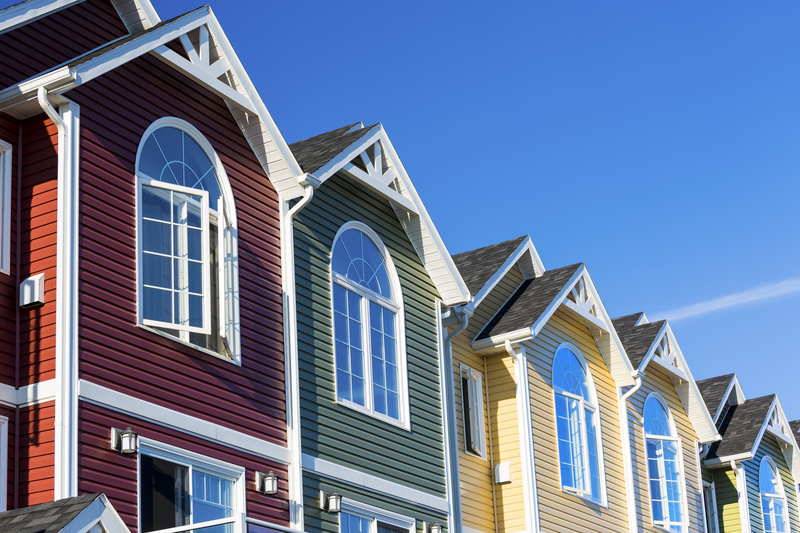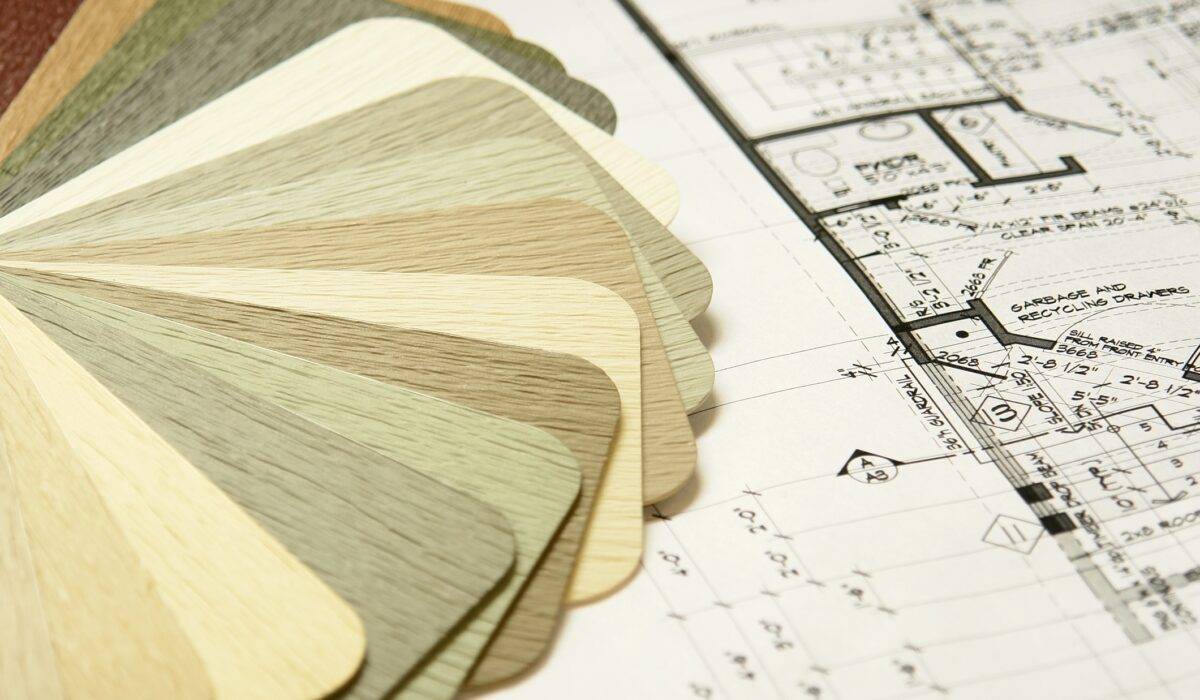Ultimate Guide to Vinyl Siding Options for Harford County Homes
When it comes to enhancing the exterior of your Harford County home, vinyl siding is a top choice for many homeowners. Vinyl siding not only boosts curb appeal but also provides a protective barrier against the elements. If you’re considering a vinyl siding installation, you’re in the right place. In this comprehensive guide, we’ll explore everything you need to know about vinyl siding options to make an informed decision for your home.
What is Vinyl Siding?
Vinyl siding is a popular exterior cladding material made from polyvinyl chloride (PVC) resin. It’s known for its durability, versatility, and low maintenance requirements, making it an excellent choice for homeowners. Vinyl siding comes in various styles, colors, and textures, allowing you to achieve the desired look for your home.
Types of Vinyl Siding
When it comes to vinyl siding, there are several types to choose from, each with its own set of characteristics. Let’s explore the most common types:
 Vinyl Siding Panels
Vinyl Siding Panels
Vinyl siding panels are the most traditional option. They are available in different lengths and widths, making them versatile for various architectural styles. The panels can mimic the appearance of wood, brick, or stone, giving your home a timeless look.
Vinyl Log Siding
For a rustic and log cabin-like aesthetic, vinyl log siding is an excellent choice. It replicates the appearance of real wood logs but without the high maintenance requirements. This type of siding adds warmth and charm to your home’s exterior.
Vinyl Lap Siding
Lap siding is another classic option that provides a clean and horizontal look. It’s available in various profiles, including Dutch lap and clapboard, allowing you to customize the style to match your home’s design.
Vinyl Shake Siding
If you prefer a textured, cedar shake look, vinyl shake siding is the answer. It adds character and dimension to your home’s exterior while being resistant to rot and pests.
Vertical Vinyl Siding
Vertical siding is a unique choice that can make your home stand out. It’s often used as an accent or on contemporary-style homes, offering a sleek and modern appearance.
Pros and Cons of Different Vinyl Siding Types
Now that you know the various types of vinyl siding, let’s weigh their pros and cons:
 Pros of Vinyl Siding
Pros of Vinyl Siding
- Low Maintenance: Vinyl siding is virtually maintenance-free. It doesn’t require painting or staining, only occasional cleaning with a hose.
- Durability: Vinyl siding is resistant to rot, pests, and moisture, ensuring a long lifespan.
- Variety: With numerous styles, colors, and textures, you can achieve the exact look you want.
- Cost-Effective: Vinyl siding is generally more affordable than many other siding materials.
- Energy Efficiency: Insulated vinyl siding options can improve your home’s energy efficiency and reduce heating and cooling costs.
- Quick Installation: Vinyl siding is relatively easy and quick to install, saving you labor costs.
Cons of Vinyl Siding
- Fading: Over time, vinyl siding can fade due to exposure to sunlight.
- Limited Repair Options: Damaged sections may need to be replaced entirely as repairs can be challenging.
- Environmental Concerns: Some environmental concerns are associated with PVC production, although recycling programs are available.
Styles of Vinyl Siding
In addition to the types of vinyl siding, there are various styles to consider:
- Traditional: Traditional vinyl siding mimics the look of wood, offering a classic appearance.
- Cedar Shake: Cedar shake-style vinyl siding provides a rustic and textured look.
- Contemporary: Clean lines and bold colors characterize contemporary vinyl siding styles.
- Colonial: Colonial styles offer timeless elegance, often with beaded siding profiles.
Choosing the Best Style and Type of Vinyl Siding
The ideal style and type of vinyl siding for your Harford County home depend on several factors:
- Architectural Style: Consider your home’s architectural style and choose siding that complements it.
- Climate: Think about your local climate; some siding types may be better suited for harsh weather conditions.
- Budget: Determine your budget, as some siding types and styles may be more expensive than others.
- Personal Taste: Ultimately, your personal taste and the look you want to achieve should guide your decision.
Exploring Siding Materials in Detail
To help you make an even more informed decision about your siding, let’s dive deeper into the various materials available, comparing them to vinyl siding and each other:
Vinyl Siding
As discussed earlier, vinyl siding is a popular choice due to its durability, low maintenance requirements, and versatility. It’s available in an extensive range of colors and styles, making it suitable for virtually any architectural design. One notable feature of vinyl siding is its insulation options, which can improve your home’s energy efficiency and reduce heating and cooling costs.
Pros of Vinyl Siding:
- Low maintenance.
- Durability and resistance to rot and pests.
- Wide variety of styles and colors.
- Cost-effective.
- Energy-efficient options available.
- Quick installation.
Cons of Vinyl Siding:
- Fading over time.
- Limited repair options for damaged sections.
- Some environmental concerns related to PVC production.
Fiber Cement Siding
Fiber cement siding is a versatile and robust option. It’s made from a combination of cement, sand, and wood fibers, resulting in a highly durable material. Fiber cement siding can mimic the appearance of wood, stucco, or masonry, making it a versatile choice for various architectural styles. It’s resistant to fire, pests, and rot, making it an excellent long-term investment.
Pros of Fiber Cement Siding:
- Exceptional durability.
- Resistant to fire, pests, and rot.
- Versatile design options.
- Low maintenance.
- Long lifespan.
Cons of Fiber Cement Siding:
- Heavier than vinyl, requiring additional labor during installation.
- Higher upfront cost compared to vinyl siding.
Brick Siding
Brick siding is known for its classic and timeless appeal. It offers excellent insulation properties and is virtually maintenance-free, lasting for generations. However, it tends to be more expensive than vinyl siding, both in terms of material and installation costs. Additionally, its weight may necessitate professional installation.
Pros of Brick Siding:
- Timeless elegance.
- Excellent insulation.
- Extremely durable.
- Low maintenance.
Cons of Brick Siding:
- High upfront cost.
- Requires professional installation.
- Limited design flexibility.
Cedar Shake Siding
Cedar shake siding provides a rustic and textured appearance, reminiscent of traditional wood cabins. It’s made from natural cedar wood, offering a beautiful and authentic look. However, it demands regular maintenance, including staining or painting, to prevent rot and insect infestations.
Pros of Cedar Shake Siding:
- Rustic and textured appearance.
- Authentic wood aesthetic.
- Good insulation properties.
Cons of Cedar Shake Siding:
- Requires regular maintenance.
- Susceptible to rot and pests.
Wood Siding
Wood siding, often cedar or redwood, offers a warm and inviting aesthetic. It’s favored for its natural beauty. However, it demands frequent maintenance, including painting or staining, and is more susceptible to damage from the elements.
Pros of Wood Siding:
- Authentic and natural appearance.
- Warm and inviting aesthetic.
Cons of Wood Siding:
- High maintenance requirements.
- Vulnerable to rot, pests, and weather damage.
Log Siding
Log siding mimics the appearance of real wood logs, providing a charming and rustic look to your home’s exterior. It’s an excellent alternative for those who love log cabin aesthetics without the high maintenance and cost of real logs.
Pros of Log Siding:
- Rustic and charming appearance.
- Low maintenance compared to real logs.
Cons of Log Siding:
- May not provide the same authenticity as real logs.
Cement Siding
Cement siding, frequently made from fiber cement, offers durability and versatility. It can replicate the look of wood, stucco, or masonry, providing a wide range of design options. Like fiber cement, it’s resistant to fire, pests, and rot, making it an attractive choice for many homeowners.
Pros of Cement Siding:
- Durable and versatile.
- Resistant to fire, pests, and rot.
- Varied design options.
Cons of Cement Siding:
- Higher upfront cost compared to vinyl siding.
- Heavier, potentially requiring additional installation labor.
Factors to Consider When Choosing Siding
When making a choice between vinyl siding and its alternatives, consider the following factors:
- Climate: Harford County, MD, experiences varying weather conditions throughout the year. Ensure your chosen siding material can withstand the local climate, including harsh winters and hot summers.
- Maintenance: Evaluate how much time and effort you’re willing to invest in siding maintenance. Vinyl siding generally requires less maintenance than wood, for example.
- Budget: Set a clear budget for your siding project. Different materials come with varying price points, both for the material itself and installation costs.
- Aesthetic Preferences: Your personal style and the desired look for your home play a significant role. Consider which material aligns best with your aesthetic vision.
- Longevity: Think about how long you plan to stay in your home. Some siding materials, like brick and fiber cement, can last for decades, making them a good long-term investment.
- Environmental Concerns: If sustainability is a priority, research the environmental impact of your chosen siding material, including its production and disposal.
Enhancing Siding with Additional Features
When you’ve narrowed down your siding material selection, there are still numerous ways to enhance the look, functionality, and energy efficiency of your home’s exterior. Here are some features and considerations to ponder:
Color and Finish
The color and finish of your siding can significantly impact your home’s aesthetics. Vinyl siding offers an extensive range of colors and finishes, allowing you to achieve your desired look. Be mindful of the color’s compatibility with your neighborhood’s style and any homeowner association regulations.
Trim and Accents
Don’t overlook the importance of trim and accents. These details can make your siding pop and add character to your home. Consider contrasting or complementary colors for trim, shutters, and accents to create visual interest.
Soffit and Fascia
Soffit and fascia play a vital role in protecting your home’s eaves and roofline. Opt for durable materials like vinyl soffit that can withstand the elements while providing proper ventilation to your attic.
Insulation
Siding insulation is essential for energy efficiency. Many siding materials, including vinyl, offer insulated options that help regulate your home’s temperature and reduce energy costs. Insulated siding can also dampen outdoor noise, enhancing your living comfort.
Maintenance Considerations
Think about the long-term maintenance requirements of your chosen siding material. Vinyl siding is known for its low maintenance, but it’s essential to keep it clean to prevent mold or mildew growth. Other materials, like wood, may require regular painting or staining.
Architectural Accents
Consider architectural accents like corbels, brackets, or decorative trim to enhance your home’s overall aesthetic. These details can be particularly effective when combined with specific siding styles, such as Victorian gingerbread trim or Craftsman-style brackets.
Warranty and Lifespan
Review the warranties and expected lifespan of your chosen siding material. Vinyl siding often comes with extended warranties, but other materials like brick and fiber cement are known for their longevity.
Energy Efficiency
Energy-efficient siding can reduce your heating and cooling costs. Look for materials with high insulation properties, and consider adding house wrap or additional insulation during installation to maximize energy efficiency.
Eco-Friendly Options
If sustainability is a priority, explore eco-friendly siding materials or options with strong recycling programs. Some materials, like fiber cement, are made from sustainable and recyclable materials.
Solar Integration
If you’re environmentally conscious and looking to harness renewable energy, consider integrating solar panels into your siding design. Solar siding systems can help you generate clean energy and reduce your carbon footprint.
Siding Installation Professionals Near Bel Air, Maryland
Regardless of the siding material and features you choose, professional installation is critical to ensure your siding performs at its best. Harford Roofing & Exteriors, as a trusted local expert, can assist you with the entire process, from material selection to installation and maintenance. Our experienced team can help you explore vinyl siding options and navigate the intricacies of Harford County’s climate and architectural styles, ensuring your siding project is a success.
Selecting the right siding material is just the beginning of your home’s exterior transformation journey. By considering additional features and details, you can elevate your home’s curb appeal, energy efficiency, and overall value. Working with a reputable professional like Harford Roofing & Exteriors ensures that your siding project reflects your vision and provides long-lasting beauty and protection for your home. At Harford Roofing & Exteriors, our experienced siding contractors are licensed, bonded, and insured. We have a five-star rating on Google and strong ties to our Harford County community. Call us today at (443) 292-6020 for an onsite assessment, or request a quote online on our website.

